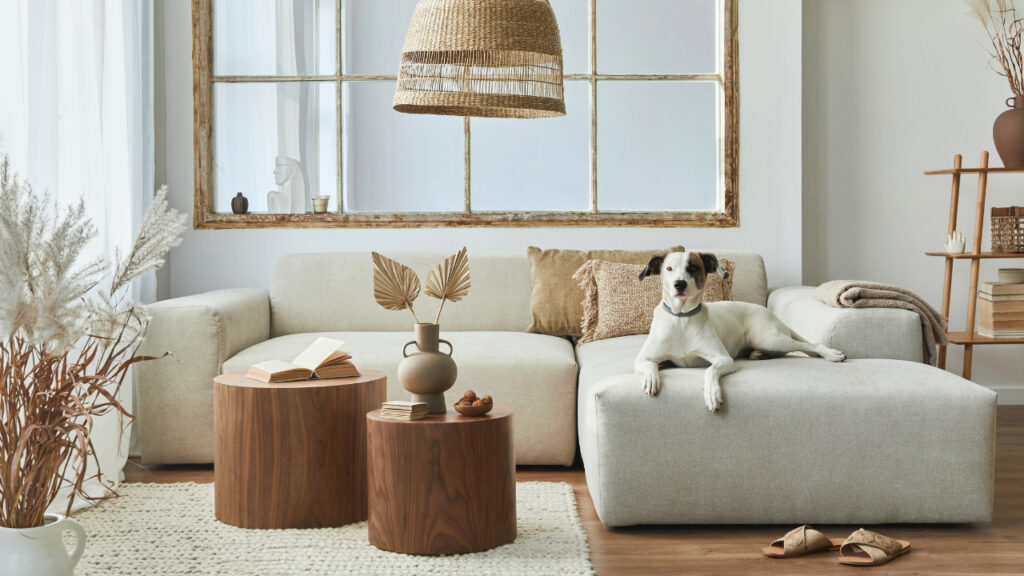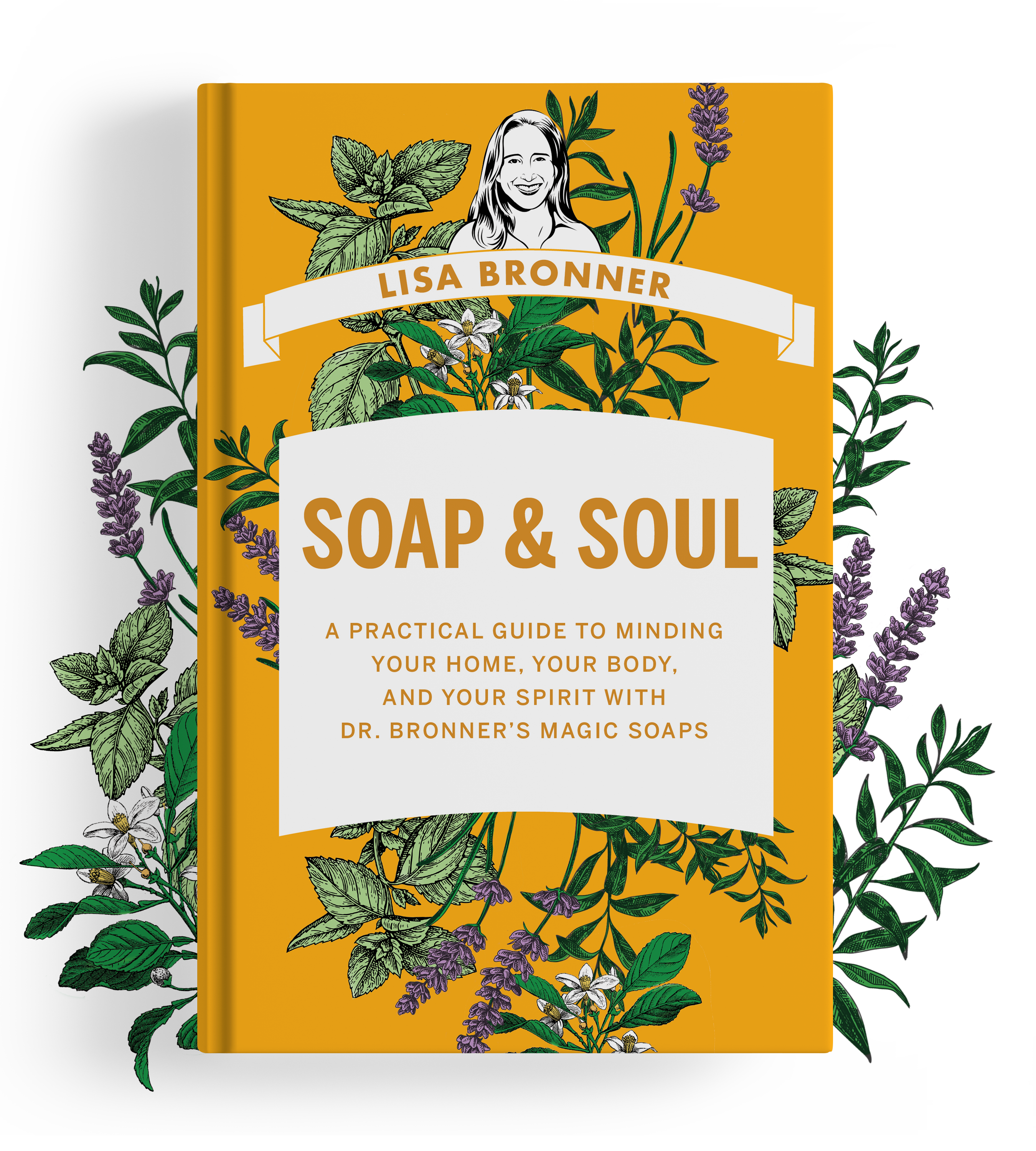
The green chair sat in the corner of my childhood living room. It was a large, velvety, cushiony chair that rocked and swiveled. Plenty comfy, and if you chose to sit there, it was a great spot to read. But you did not want to get sent to the green chair. Mention the green chair to either of my brothers, and they will undoubtedly shudder and laugh ruefully. It was where we got parked when Mom was at her wits’ end with us. If we were sent to the green chair, we were in trouble.
Green chairs aside, I have lots of vivid furniture memories that have nothing to do with mischief. There was the embodiment-of-70s-style tapestry sofa with its orange/gold/brown brocade where I learned to read and where I nested when home sick from school. That couch was eventually replaced by the white one with pastel flowers that my mom got in my teen years. I guess we were old enough to be trusted not to put muddy shoes on it. I took that new sofa as her acknowledgement that we had grown up.
Cleaning upholstery can be daunting because the pieces are large and often expensive. But rising to the task will keep them in great shape to accompany many years of memories.
How to Clean Upholstery
Use the least intensive method to clean
If all your furniture needs is a good vacuuming, then that’s all you need to do. More intensive methods can wear down fabrics, remove texture, or change colors, thereby shortening the lifespan of your furniture.
Your vacuum is your friend
Vacuum upholstered furniture often. If you do nothing else, do this. And if you’re going to do anything more, do this first. Dirt degrades fabrics. As miniscule and benign as dirt specks may look to us, to fabric fibers, dirt particles are balls of tiny sharp edges. Each time the cushions get sat upon and rub against each other, the dirt acts as sandpaper against the fabric, wearing it down. So if you do nothing else, vacuum your upholstery regularly. Use all those curious attachments to vacuum the field of the cushions and get down into all the crevices.
If vacuuming isn’t getting everything, try a lint roller. Certain fabrics really hold on to debris. My first adult sofa comes to mind with its deep blue velvet. It was so beautiful…until it met my white long-haired cat. The lint roller was my best friend when it came to cleaning that sofa.
Deodorize with baking soda
Perhaps your upholstery is not visibly dirty but has an odor all its own. Baking soda is a marvelous natural deodorizer that works on upholstery and carpets alike. Try this on an inconspicuous spot of your upholstery first. Sprinkle the surface with baking soda. Brush it in with a hand whisk. Let it sit for 10 minutes. Then using a machine with a HEPA filter, vacuum it out thoroughly.
Try dry brushing
If you’ve vacuumed your piece and you still see substances on the surface, try lightly brushing the fabric to see if it’s just a surface deposit. Many upholstery fabrics are treated to prevent absorption, so spills stay on the surface. You might be able to brush off the deposit with a soft brush. If it’s small, try a dry toothbrush. If it’s larger, try a handheld whisk broom. Nothing too stiff as you don’t want to wear down the fibers.
Read the tags
Before you launch into any sort of cleaning with a liquid cleaner, there’s a cryptic code you need to learn in order to know what to use to clean upholstered fabrics. A secret language of sorts. Before you cut off and discard the big ugly tag that comes attached to the furniture, read it. Even after you cut the tag off, staple it to a piece of paper and file it away. Someday you will want to know what it says. Among many things, it will list one of the following letters:
- W – Can be cleaned with a water-based cleaner. These are cleaners with water as their base. This includes soaps like Dr. Bronner’s Castile Magic Soap or and detergents like Dr. Bronner’s Sal Suds Household Cleaner. It also includes steam cleaners that use only water.
- S – Can be cleaned only with a non-water based solvent. These may be petroleum based, or similar to what is used for dry-cleaning fabrics (a process that is not dry, but rather waterless).
- W or S – Can be cleaned with either a water-based or a non-water based cleaner.
- WASH – Lucky you! You can remove the cover of the piece and wash it in your washing machine. Wash it with cold water and a mild soap or detergent. Air dry.
- X – Cannot be cleaned with either a water-based or a non-water based cleaner. This means you can only remove debris physically with a vacuum or a lint roller.
The “cleanability” of a piece of furniture is something to consider when buying it, especially if the piece is going to get a lot of heavy use. Removable covers are the most convenient to clean, followed by fabrics that can be cleaned with water-based cleaners.
Know your color(fastedness)
At this point, you’ve vacuumed your furniture, you’ve tried dry brushing and catching spills before they set, but you still see stains. Time to take things to the next level. Before you take any sort of liquid cleaner or even water to your upholstery, take a white washcloth, dampen it with your intended cleaner (or with just water if that’s all you intend to use) and gently rub an inconspicuous spot. Check the washcloth and see if any dye has transferred. If the dye transfers, it is all the more essential that you vacuum your piece regularly and eliminate the need for further washing. If the piece does need to be cleaned deeply and is not color-fast, consider consulting a professional.
Clean up spills before they become stains
The sooner you tackle a spill, the better the results will be. If you can get to it before it even dries, it will have the least chance of adhering to the fibers.
If the spill is water based (coffee, wine, soda, juice), lay an absorbent cloth over the liquid and let the cloth absorb up the spill. Don’t press down on the cloth because you don’t want to drive the liquid into the cushion. If a spill is thicker—let’s say ketchup or nacho cheese—try to scrape up the spill with a hard edged implement such as a dull butter knife. Lift the substance off the fabric, and again take care not to drive the spill into the surface.
Address stains promptly with spot cleaning
If you ignore stains, they will not go away. I’ve tried that technique, and it didn’t work. The time we spend removing stains saves a lot of time that we’d soon need to spend working for and shopping for a new sofa. The longer a stain stays in a fabric, the harder it will be to remove. As far as what to use on different types of stains, I refer to this comprehensive guide offered by the American Cleaning Institute. Seems like they’ve seen it all! Where they recommend soap and Dr. Bronner’s Pure-Castile Magic Soap or Sal Suds Household Cleaner are both great options.
- When soap & water are recommended: In a bowl or bucket, add a small squirt (roughly 1 tsp.) Dr. Bronner’s Castile soap or a few drops (roughly ½ tsp.) Dr. Bronner’s Sal Suds to a quart of water.
- Another trick is to use my GIY Housecleaning Wipes, though leave out the tea tree essential oil. Make sure the wipes are damp and not drippy.
Keep the stain isolated by using a dabbing technique. Rubbing the stain or using a broader motion could spread the stain onto more fabric. Easy does it. Dip a microfiber cloth into the cleaning solution and dab gently at the stain. I recommend microfiber for the cloth because it is highly absorbent, endlessly reusable (at least I haven’t found the end of mine after 15 years), lint-free, and color fast. Keep dipping and dabbing until the stain is lifted. If it is stubborn, let the solution sit on the stain for ten minutes, but don’t let it dry. Then return and dab some more.
Rinse cleaners thoroughly
Regardless of what cleaner you’ve used to treat the stain, you need to make sure you remove all the cleaner from the fabric. Cleaner left in the fabric will attract and hold on to dirt, eventually reappearing much to your consternation. With water-based cleaners, dip a fresh microfiber cloth into water and dab at the cleaned area until you are certain you have removed all the solution.
Wash washable covers and cushions
If your furniture tag has that magic word “WASH” on it, then remove the covers and wash either in a machine or by hand.
- Machine Washing with Castile Magic Soap or Sal Suds: Use ½-1 Tbsp. (7.5-15 mL) Sal Suds OR 2-3 Tbsp. (30-45 mL) Castile in an HE washer. (Double these amounts for a standard washer. This is a milder dilution than my general laundry recommendations.) Wash with cold water on a Delicate setting. Hang to air dry.
- Handwashing with Castile Magic Soap or Sal Suds: Use 1 tsp. (5 mL) Sal Suds OR 1 Tbsp. (15 mL) Castile in a large sink of water. Another option is to use a bathtub, in which case you may need to double these amounts. Submerge the items and squeeze the sudsy water through. Let sit 10 minutes. Squeeze the suds through some more for several minutes. Then rinse the items thoroughly. Hang to air dry.
Do a full upholstery cleaning only when necessary
If after all of the above, your piece is still grungy, consider a full deep cleaning using an upholstery cleaner machine or the upholstery attachments on a carpet cleaner. This is an intensive cleaning method and should only be undertaken when deemed necessary. It involves more liquid which could cause a problem if it does not fully dry. Apply too much cleaner and be difficult to remove. It can wear down the fabrics and remove protective coatings. If the fabric can handle a water-based cleaner and you’ve tested for colorfastness, use the following dilutions for the Castile Magic Soap or Sal Suds in the cleaning solution compartment of the machine.
- Fill the cleaning solution compartment with water. Add ¼ tsp. (1.25 mL) Castile Magic Soap or 1 drop Sal Suds.
After going over the upholstery with the cleaning solution, go over it again to rinse with pure water. Check the fabric to be sure all the suds are gone. If not, rinse again.
Let it dry
Thoroughly drying the upholstery is the last crucial piece. Damp fabrics foster the growth of all manner of microbes. Use a box fan aimed directly at the piece or an overhead ceiling fan. If the weather is not humid, set the piece out in the sun. Make sure it dries super duper completely.
Upholstery don’ts
Do not saturate upholstery. Don’t use drippy cloths or intense sprays from carpet cleaners. This can make the upholstery hard to dry.
Don’t overspray stains. In fact, I would not spray furniture at all, but rather if your cleaner is in a spray bottle, spray your cloth and then dab the stain for the reasons stated above.
Don’t rub too vigorously. Most upholstery has some sort of nap or texture. You don’t want to rub this off.
Don’t leave cleaners on the fabric. Rinse them out with water if they’re water based or follow the manufacturer’s instructions.
But wait! There’s more!
Blankets & pillows need cleaning too
In fact, blankets and pillows likely need cleaning more. These are where we put our heads and our hands, so they get the dirtiest and we contact them the most. Check their cleanability and clean accordingly. Hopefully pillow covers can be removed and everything can be tossed in the washer and hung to air dry. Handwashing is another great option. Follow the recommendations for both above.
Don’t forget to wash the dog!
If your dogs are frequently on the furniture, I highly recommend washing them, too. I adore dogs, but they are responsible for more dirt on the upholstery than we are. Washing dogs is its own topic, so head over to see my black lab Tucker and I demonstrate a dog bath with Dr. Bronner’s Castile Magic Soap. Even if you don’t have a dog, you’ll enjoy getting to know Tucker. Washing the dog stops dirt at its source!
And then there’s leather
I have come across completely divergent recommendations regarding cleaning leather. Where they all agree is that you should wipe them down with a damp cloth and vacuum them out thoroughly. For stain removal and conditioning, I need to refer you to your furniture manufacturer for their recommendations. This is not a field in which I have mastery.
In conclusion
Vacuuming is the most important method of upholstery cleaning. It’s also the simplest and fastest. Whether your furniture is green, gold, or dazzling white, regular care for the upholstery will keep it in tip top shape.
While we’re on the topic, share one of your own “furniture memories” in the comments!
Further reading:
- Sal Suds or Castile Soap – Which to Use?
- Cleaning Carpets with Sal Suds & Castile Soap
- How to Clean Your Indoor Air
Sal Suds cleaner shows >60% biodegradation after 28 days per ISO 14593.



I love the soap my great grandmother used it for years
Thanks, Sherri! I love the stories our soap being passed down through the generations!
Hi Lisa, that green chair you described….I had the same one! It came with me to my first apartment from my parent’s house and I remember it barely fitting in my little Mercury Lynx, but I was determined to bring it with me! Lol
BTW, Santa left me your new book under the Christmas tree! I’m so excited to start reading it.
Take care, and Happy New Year!
Hi J – Ha! I need to dig up a pic of that green chair so we can compare! Mine certainly would have been a tight fit in a Mercury Lynx!
That certainly warms my heart to hear what Santa brought you. I hope you enjoy it!